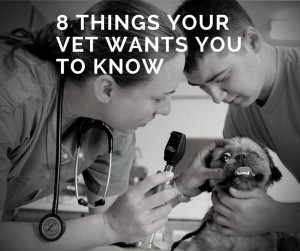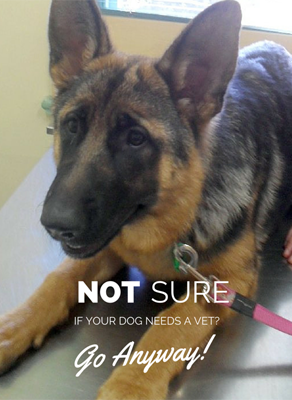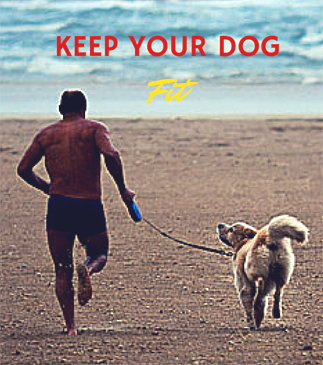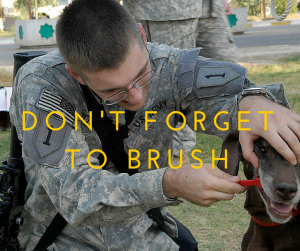- Male Dog Names: Game of Thrones Unofficial Guide
- How to Take Care of Your Dog: 8 Things Your Vet Wants You to Know
- A New Grump In Town- Grumpy Cat Meet Grumpy Dog
- Watch Out! The 8 Most Dangerous Household Items for Dogs You Might be Overlooking
- The 15 Most Embarrassed Dogs on Dress Up Your Pet Day
- Guaranteed Smile: You Won’t Believe How This Dog Greets Her Owner
- Dogs in Booties – Way More Fun Than You’d Expect
- 22 Naughtiest Dogs Confess Their Crimes
How to Take Care of Your Dog: 8 Things Your Vet Wants You to Know
Nobody likes having to bring their pet to the vet. Odds are your dog doesn’t like it any more than you do. Going to the vet is a stressful experience for a dog in an unfamiliar environment, which makes many dogs skittish and many pet owners less than enthusiastic. Even so, it is very important to bring in your dog for an annual checkup. Doing so can prevent serious problems and make it easier to treat them when they do crop up by catching them early.
The decisions you make throughout the year are just as important, however, when it comes to protecting your dog’s physical and psychological well-being. In fact, if you make smart, healthy choices and follow your vet’s recommendations, you can prevent more trips to the vet that fall outside your routine schedule. Imagine what a great job actual veterinarians do taking care of their own pets, with all their professional expertise. Wouldn’t it be great if you knew their secrets? Here are 8 things your veterinarian wishes you knew about how to take care of your dog!

1. If you aren’t sure whether your dog should see the vet, go anyway

Your dog may not seem to appreciate an unnecessary trip to the vet, but better safe than sorry. The truth is, your dog appreciates you taking the steps you need to in order to protect his health, even if it isn’t always something he enjoys. If you are on the fence about going to the vet, you should always play it safe and go. Remember, your pet is 100% dependent on you for making decisions about his health. He is your responsibility. He does his best to let you know when something might be wrong, but there is no way for him to tell you what he needs. When it is up to your best judgment, erring on the side of caution can save your pet’s life.
2. Don’t shy away from specialist appointments
Sometimes pet owners will avoid going to see a specialist. This is easy to understand, since specialists can be hard to get an appointment with, and may be more expensive than your primary veterinarian. Plus, your dog may at least be somewhat familiar with the normal vet office. A specialist’s office on the other hand may be totally unfamiliar.
Sometimes dog owners don’t think to go to a specialist for the simple reason that their own general practitioner fails to tell them that they should. Why? While sometimes it really is because a specialist appointment is unnecessary, there are other motivations that can unfortunately come into play as well.
According to specialist Dr. Joanne Intile, general practitioners sometimes fail to refer their patients for fear of losing business. Of course, sometimes the motives are more compassionate; general practitioners may simply feel like a specialist will be a waste of money for a given pet’s care.
What’s the best solution? Don’t refuse to see specialists out of hand; some pet owners do this, to the detriment of their pet’s health and the veterinary profession. If your general practitioner recommends you take your pet to a specialist, do so. If you believe your dog needs a specialist but your general practitioner disagrees, ask why, and make a calculated decision based on your doctor’s reasoning. Recognize in either case that sometimes a visit to a specialist is a simple necessity.
3. Feed your dog a healthy diet
We’ve all heard the saying, “You are what you eat.” That goes for your dog too. If you want to keep your canine companion healthy, you need to feed her a healthy diet. This includes AAFCO-approved dog food as well as healthy vegetables (dogs love veggies, and they make a very nutritious treat!).
It isn’t easy picking out pet food in the store, but professional veterinarian and blogger Dr. Jessica Vogelsang (Dr. V) has some great advice. Dr. V doesn’t like to recommend specific brands, because if a specific brand isn’t a great choice for a particular animal, clients sometimes assume that the broader advice she gives is also not applicable. Instead, she recommends that clients shop around for the best food they can afford. She also points out you can tell a lot about the quality of the dog food you are shopping for based on what the product name says:
- If a product says “Chicken Dog Food,” at least 95% of the product must be made of chicken (or whatever ingredient is listed).
- If a product name mentions “Dinner,” as in, “Chicken Dinner for Dogs,” 25% of the product or more must be made of chicken (or the relevant ingredient). Other key words which indicate 25% are “platter,” “entrée,” “formula,” and “chunks.”
- If a product mentions “with” an ingredient, like, “with chicken,” only 3% needs to be that ingredient.
- If the name of a product involves “flavor,” as in “chicken flavor,” there may be no chicken at all.
Dr. V also has a great guide to dog food ingredients here, and additional advice on feeding your pet here. When you are shopping for dog food, consider cost, convenience, and quality, as well as any special dietary needs of your dog. Remember, a great choice for one dog may not be an optimal choice for another, and if your dog has any health conditions, she may have special dietary requirements. Also be careful about the amount of food you give your dog. You don’t want to underfeed your dog of course, but you don’t want to overfeed her either. Obesity is a serious health issue for pets! And that brings us to our next point…
4. Exercise your dog

Work out your dog! How often you should walk your dog depends on your dog’s age, breed, health, and other factors, but most dogs need to be taken out twice a day. A good walk usually lasts about fifteen minutes. Keep your dog on a leash when you are out walking; this helps to keep your pet safe. If the weather is hot or cold, you might want to consider a jacket for your dog, and maybe even dog boots. Dog boots can prevent injury and discomfort when you and your dog are walking on hot pavement or in icy conditions.
According to the ASPCA, health benefits of walking your dog include:
- Prevent and reduce obesity.
- Reduce digestive problems like constipation.
- Eliminate common behavioral problems like hyperactivity and excessive barking.
- Keep your dog fit.
- Help your dog to settle down when it is time for sleep.
- Build trust and enhance your relationship with your dog.
The ASPCA article also provides some excellent advice on walking specific breeds of dogs, so check it out. A dog which gets the exercise he needs will not only be a well-behaved pooch, but one which is healthier physically and psychologically. There are few easier ways to prevent unnecessary trips to the vet!
5. Buy your dog fun and enriching toys and healthy, comfortable supplies
Veterinarian Dr. Sophia Yin wrote about 7 things that all dogs need. Some of these are obvious—a comfortable crate and treats for example, some of her suggestions may not be as familiar to you. Most people walk their dogs using a leash that they hold in their hand, for example, but Dr. Yin introduces the hands-free leash, a very cool system which you belt around your waist.
Also very cool are the food-dispensing toys; while many people simply feed their dog out of a bowl, a food-dispensing toy may be a better choice. Why? The toy is fun and provides your dog with entertainment as well as food, and according to Dr. Yin, studies have shown that animals such as dogs actually prefer to work for their food. Feeding your dog through toys like these makes mealtime last longer, and helps to keep your pet happy and amused.
Remember, your pet’s psychological health is every bit as important as his physical health! It is very important to take time to play with your pet, go on rides, and teach your dog new tricks. Your dog needs plenty of attention, and always needs something to do when you are busy.
6. Get rid of your extra pet medications
Have you ever been tempted to keep extra prescription pet medications around “just in case?” If you have ever been tempted to keep your own extra prescription medications around, you hopefully have talked yourself out of using them without a doctor’s go-ahead. You should be making the same responsible decision for your pet. Remember, your pet’s life is in your hands, and only you can make the right choice.
Dr. Jennifer Coates talks about pet medication mistakes over on PetMD. “The realist in me now has to admit that owners will continue to medicate their pets without the benefit of veterinary advice no matter what I say,” she writes. “The point of this post is to inform you of several instances when you must restrain yourself. The risks far outweigh any potential benefits.”
Which instances are those? Dr. Coates recommends that you particularly avoid giving your pet leftover oral antibiotics. “Giving your pet an antibiotic when it is not needed, the wrong type of antibiotic, or an expired antibiotic can result in antibiotic resistant infections that are very difficult to treat.” She also recommends you avoid giving your dog corticosteroids unless they have been specifically prescribed. Eye medications are also a really bad idea unless they have been prescribed. Eye problems which are treated improperly (or not at all) can very quickly worsen.
7. Do not neglect your dog’s oral health

It is easy for oral health to fall by the wayside since you need to see a dog dentist separately; your vet can’t take care of all your pet’s oral health needs. That said, your general practitioner appreciates it when you take your dog to the dentist! Oral health problems can be every bit as serious as any other health problems, and can cause other issues over time. So clean your dog’s teeth at home regularly, and schedule annual cleanings and exams for teeth and gums. Yes, it requires anesthesia, and no, it’s not a lot of fun, but it’s worth it!
8. When something does go wrong, it isn’t always your fault
If you don’t take care of your dog and something goes wrong… yeah, it’s your fault. But if you’re a loving, caring pet owner and your dog still gets sick or injured, it doesn’t do any good to blame yourself, according to veterinarian Dr. Krista Magnifico. “Many pets die without us knowing why or what happened,” she writes to one distraught reader on her site. “Some of them can hide or mask signs of illness and this makes understanding that they need medical help difficult.” Sometimes bad things simply happen for no reason, and nothing you could have done as the pet owner could have prevented it. So long as you did your job and loved your pet and gave him or her a happy life, you were a good dog owner.
That said, even though you can’t prevent some things, you can prevent or treat others. For example, aging is one of those unavoidable things that you can do nothing about. But you can help your pet to cope with the health issues that can accompany age. Dr. V (@pawcurious) tells pet owners,
Dr. Magnifico (@FreePetAdvice) also reminds readers that veterinarians may seem “a bit reserved and composed when we talk about all the scary things we do routinely.” But that does not mean your vet isn’t there for you and your dog. “You have to trust in your heart that we have your pet’s best interest in our hearts,” she writes. “If you don’t, nothing that follows, nor any decision you make will feel right.”
When you follow these veterinarian tips for taking care of your dog, you greatly increase the chances of your pet living a long, healthy, and happy life. You will be able to reduce the number of non-routine veterinary appointments in your dog’s future, and ensure that your annual appointments transpire as smoothly as they can. And best of all, both you and your dog will know you are doing the right thing, and you will be able to share a happy and fulfilling relationship!







